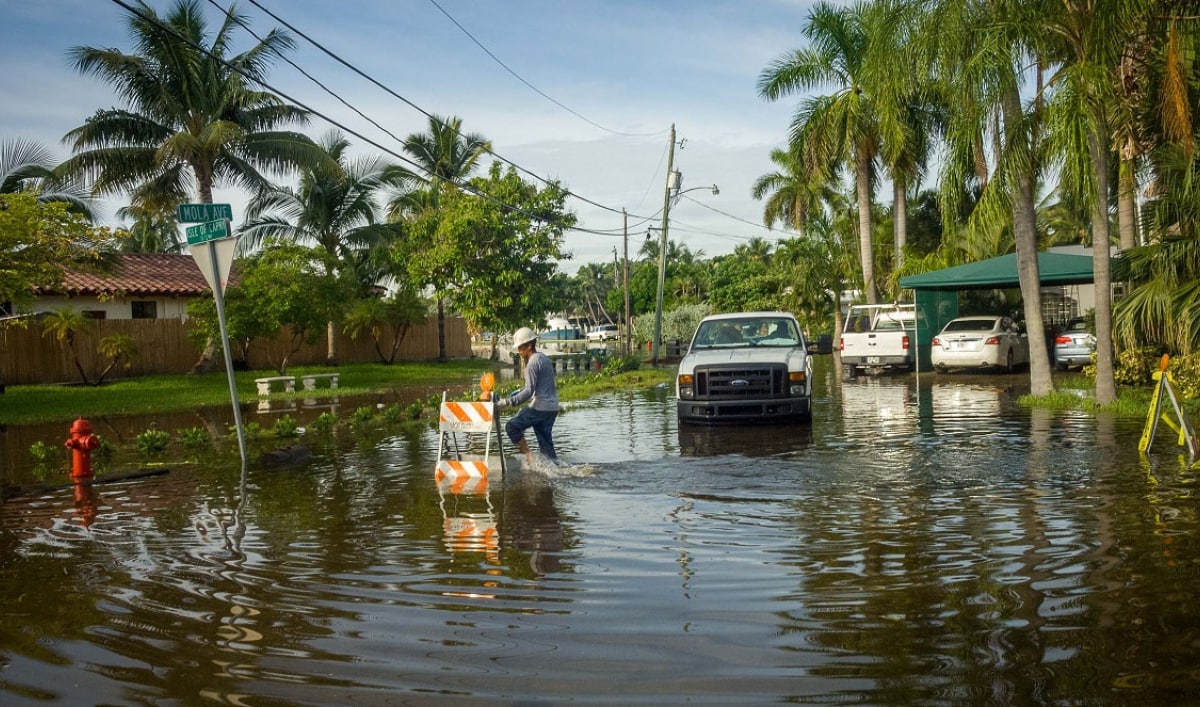
The effects of climate change are such that some politicians will support bills that deal with climate resiliency without addressing climate change directly in their rhetoric. Meanwhile, Florida’s very name is a nod to the unique natural life that calls this state home.
However, it can be challenging for environmental issues to break through in favorable years, and this is not one — pocketbook issues that typically dominate voter concerns have some extra oomph.
A new poll from AARP shows the environment and climate change in the middle to back of the pack on issues important to people aged 50 years and older.
A bipartisan polling firm team of Fabrizio Ward and Impact Research collaborated on the poll that involved more than 1,600 Floridians the week of Aug. 24-31.
The poll, which had a 4.4% margin of error, included 500 likely voters, with an emphasis on older likely voters that included 550 likely voters 50 and older, with 262 Hispanic and 314 Black voters.
Regarding the vote for Senator, 5% of older Floridians said the environment and climate change were most important — that’s tied for eighth place with jobs, the economy, and election security.
The environment didn’t crack the top three Democratic issues for Senate, either. The top three issues for older Floridians voting for Senate were inflation and rising prices (15%), Social Security and Medicare (12%) and taxes, government spending, and debt (12%).
Survey respondents had the environment tied for No. 6 among the most critical issues involving the gubernatorial race. Environment and climate change received 7% of respondents’ answers, along with law and order, crime, and gun control and rights.
For the Governor, older Floridians’ three top issues were inflation and rising prices (19%), jobs and the economy (14%), and abortion (12%). The environment came in at No. 3 for top issues among Florida Democrats who are 50-plus years old and voting for Governor, with 10%.
More intense, longer-lasting hurricanes, wildfires, sea-level rise, sunny-day flooding — these are all issues Florida is currently dealing with. These problems are also worsening, an example of which can be seen in sea-level rise acceleration.
The global mean sea level rose an average of 1.5 millimeters a year from 1900 to 2000, but that increased to 3.3 millimeters a year from 2000 to 2021. Similarly, while the global mean sea level rose 6 inches in that century, it’s already increased nearly 3 inches in the last 20 years.
“If you take that 3 inches over 25 years, multiply that by four, that’s a foot,” engineer Angela Schedel said during a recent seminar at the Howard T. Odum Center for Wetlands at the University of Florida. “That’s a foot in the next hundred years. The rate of sea-level rise has doubled.
“There’s a lot of reasons for it; I’m not a climate scientist — this is just the use case for resilience and why we should really care.”
The notorious lack of salience for environmental issues in elections is one of the motivating factors behind the Environmental Voter Project, which seeks to energize a group of voters who prioritize environmental issues and aren’t turning out.
“I think it’s a sign of growing strength in the environmental movement that 7% of (older) Floridians now list climate or environmental issues as their top priority when voting for Governor — that’s near the high end of what we tend to see in midterm election cycles,” said Nathaniel Stinnett, Executive Director of the Environmental Voter Project.
“However, I don’t think we do ourselves any favors by overstating the size of that number — 7% is big, but it’s not nearly as big as we in the environmental movement need it to be.”
He said they’re looking at a goal of 12-15% for the environment and climate change as voters’ top issue on Election Day, which is what they believe is the level to get legislators to lead on climate effectively.



